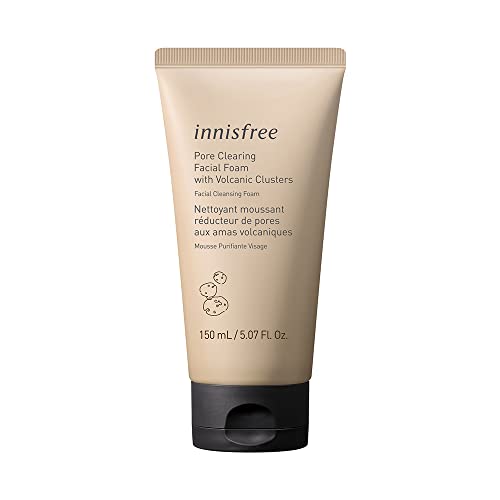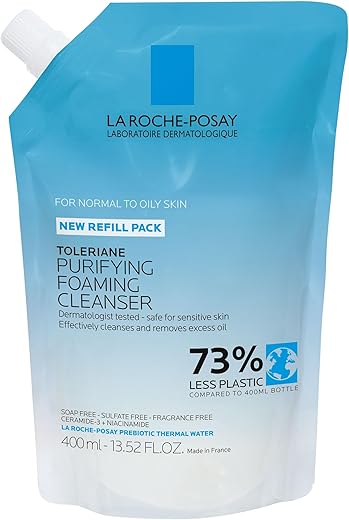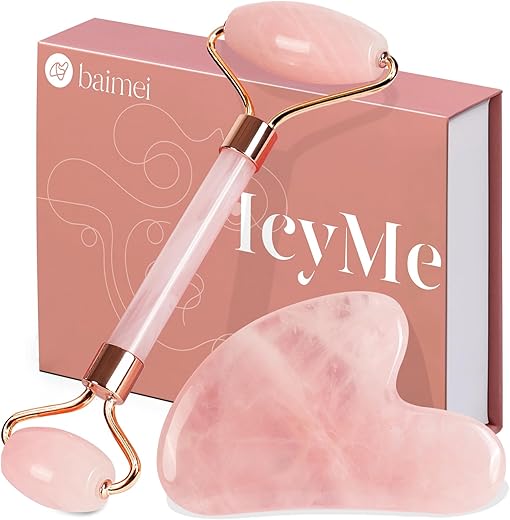
How Face Gel Can Help with Acne and Blemish-prone Skin
Dealing with acne and blemish-prone skin can be frustrating and disheartening. The constant battle to achieve clear, smooth skin can take a toll on our self-esteem and confidence. If you’re tired of trying countless remedies and feeling like nothing is working, then this blog post is for you. We understand the struggle, which is why we want to share with you how face gel can be a game-changer in your skincare routine. It’s time to embrace a new approach and discover the incredible benefits of face gel for acne and blemish-prone skin.
Top-selling face gels for a refreshed and radiant complexion






Understanding Acne and Blemish-prone Skin
Acne is a common skin condition that affects millions of people worldwide. It can be frustrating, embarrassing, and have a significant impact on an individual’s self-esteem. If you’re someone who struggles with acne or blemish-prone skin, understanding the causes and triggers can help you better manage and improve your skin’s condition. In this blog post, we will delve into the intricacies of acne and blemish-prone skin, exploring the underlying causes and providing essential tips to maintain a consistent skincare routine.



What is Acne?
Acne is a skin condition characterized by the formation of pimples, blackheads, whiteheads, and cysts. It commonly occurs on the face, neck, chest, and back. Hormonal changes, excessive sebum production, clogged pores, and bacteria are the primary factors contributing to acne. It can affect people of all ages, but it is most prevalent during adolescence and can persist into adulthood.
Causes of Acne
Hormonal Changes:
- During puberty, hormonal fluctuations can stimulate the sebaceous glands to produce more sebum, leading to clogged pores and acne breakouts.
- Hormonal changes during the menstrual cycle can also trigger acne in some women.
Excessive Sebum Production:
- Sebum, an oily substance produced by the sebaceous glands, helps lubricate and protect the skin. However, excessive sebum production can lead to clogged pores and the formation of acne.
- Factors such as genetics, stress, and certain medications can contribute to increased sebum production.
Clogged Pores:
- Dead skin cells, excess oil, and dirt can accumulate on the skin’s surface, clogging the pores and promoting the growth of acne-causing bacteria.
- Improper cleansing, using comedogenic skincare products, and environmental factors can contribute to pore blockage.
Bacteria:
- Propionibacterium acnes (P. acnes), a type of bacteria found on the skin, can multiply in clogged pores, causing inflammation and acne breakouts.
- The presence of bacteria on the skin does not necessarily cause acne, but it plays a significant role in exacerbating existing acne.
Triggers for Acne Breakouts
Apart from the underlying causes, several triggers can worsen acne breakouts. Recognizing these triggers and making necessary adjustments to your lifestyle can help manage your acne-prone skin effectively. Here are some common triggers:
- Dietary factors: Consumption of high glycemic index foods, dairy products, and foods rich in refined sugars can worsen acne.
- Stress: Emotional stress can stimulate the release of hormones, exacerbating acne breakouts.
- Medications: Certain medications, such as corticosteroids and hormonal treatments, can cause acne as a side effect.
- Cosmetics: Using comedogenic or oily cosmetics can clog pores and contribute to acne breakouts.
- Environmental factors: Exposure to pollutants, humidity, and excessive sweating can aggravate acne-prone skin.
The Importance of Consistent Skincare Routine
Maintaining a consistent skincare routine is essential for managing acne and blemish-prone skin. Consistency allows your skin to adapt to the products you use and ensures proper cleansing, exfoliation, and hydration. Here are some key points highlighting the importance of a consistent skincare routine:
- Cleansing: Regularly cleanse your skin with a gentle, non-comedogenic cleanser to remove dirt, excess oil, and impurities. Avoid harsh scrubbing, as it can irritate the skin and worsen acne.
- Exfoliation: Incorporate exfoliation into your routine to remove dead skin cells and unclog pores. Use a chemical exfoliant with ingredients like salicylic acid or glycolic acid.
- Moisturization: Contrary to popular belief, even acne-prone skin requires moisturization. Choose oil-free, non-comedogenic moisturizers to maintain skin hydration without clogging pores.
- Spot Treatment: Utilize spot treatments containing benzoyl peroxide or salicylic acid to target individual blemishes and reduce inflammation.
- Sun Protection: Protect your skin from harmful UV rays by using a broad-spectrum sunscreen with an SPF of 30 or higher. Look for oil-free or non-comedogenic options to avoid clogging pores.
Remember, everyone’s skin is unique, and what works for one person might not work for another. It’s important to consult a dermatologist if you’re struggling with persistent acne or if your current skincare routine isn’t yielding satisfactory results. They can provide personalized advice and recommend suitable treatments or medications to address your concerns effectively.
In conclusion, understanding the causes, triggers, and importance of a consistent skincare routine is crucial for managing acne and blemish-prone skin. By implementing a skincare regimen tailored to your skin’s needs and avoiding common triggers, you can make significant strides towards achieving clearer, healthier skin.
How Face Gel Works
:When it comes to skincare, one product that has gained significant popularity in recent years is face gel. Face gel is a lightweight, water-based formula that is specifically designed to treat acne and blemish-prone skin. In this blog section, we will delve into the world of face gel and explore how it works to combat acne-causing bacteria and reduce inflammation.


Understanding Acne:
Before we dive into the specifics of how face gel works, it’s important to understand the root cause of acne. Acne is primarily caused by the overproduction of sebum, an oily substance that clogs the pores, leading to the growth of acne-causing bacteria. This, in turn, triggers an inflammatory response, resulting in redness, swelling, and the formation of pimples.
Key Ingredients to Look For:
When choosing a face gel, it’s essential to check the ingredients list to ensure it contains the following key components:
1. Salicylic Acid:
Salicylic acid is one of the most effective ingredients in combating acne. It works by penetrating deep into the pores, dissolving the buildup of dead skin cells and excess sebum. Additionally, salicylic acid has anti-inflammatory properties, reducing redness and swelling associated with acne.
2. Tea Tree Oil:
Tea tree oil is a natural ingredient known for its antibacterial and anti-inflammatory properties. When applied topically, it targets acne-causing bacteria, helping to eliminate them and prevent further breakouts. Moreover, tea tree oil aids in reducing inflammation, promoting faster healing of existing acne.
3. Niacinamide:
Niacinamide, also known as vitamin B3, is a versatile ingredient that offers multiple benefits for acne-prone skin. It regulates sebum production, reduces the appearance of enlarged pores, and calms irritated skin. Additionally, niacinamide has been found to have anti-inflammatory properties, making it an excellent ingredient for face gels.
How Face Gel Works:
Now that we have an understanding of the key ingredients, let’s explore how face gel works to combat acne and blemish-prone skin:
1. Unclogs Pores:
Face gel containing salicylic acid penetrates deep into the pores, dissolving the excess sebum and dead skin cells that clog them. This unclogs the pores and prevents the formation of new acne.
2. Eliminates Acne-Causing Bacteria:
Tea tree oil, present in face gels, has antibacterial properties that target the acne-causing bacteria. By reducing the bacterial population on the skin, face gel helps to prevent further breakouts.
3. Reduces Inflammation:
Inflammation is a common symptom of acne, causing redness and swelling. Face gel with ingredients like salicylic acid and niacinamide helps reduce inflammation, promoting a calmer and clearer complexion.
4. Promotes Skin Healing:
Tea tree oil and niacinamide aid in the healing process of existing acne. These ingredients help to soothe the skin, minimize redness, and promote faster healing of acne lesions.
Benefits of Face Gel:
Using a face gel as part of your skincare routine can provide several benefits:
- Prevents acne breakouts by unclogging pores and eliminating acne-causing bacteria.
- Reduces inflammation, minimizing redness and swelling associated with acne.
- Helps to heal existing acne lesions, promoting faster recovery and preventing scarring.
- Regulates sebum production, preventing excess oiliness, and keeping the skin balanced.
- Minimizes the appearance of enlarged pores, resulting in a smoother and more refined complexion.
Choosing the Right Face Gel
Finding the right face gel can be a daunting task, especially with the plethora of options available in the market today. With different formulations and ingredients, it’s essential to choose a product that not only suits your skin type but also addresses your specific concerns. In this blog post, we will guide you through the process of selecting the perfect face gel based on your skin’s unique needs.



Understanding Your Skin Type
Before diving into the world of face gels, it’s crucial to determine your skin type. Here are the four main skin types and their characteristics:
- Normal skin: Balanced and generally free from excessive oiliness or dryness.
- Dry skin: Lacks moisture and often feels tight or flaky.
- Oily skin: Prone to excess sebum production, leading to shine and potential breakouts.
- Combination skin: A mix of oily and dry areas, usually with an oily T-zone (forehead, nose, and chin) and drier cheeks.
Now that you have a better understanding of your skin type, let’s move on to choosing the right face gel.
Factors to Consider
1. Skin Sensitivity
If you have sensitive skin, it’s crucial to choose a face gel that is gentle and free from potential irritants. Look for products labeled as fragrance-free, hypoallergenic, or specifically formulated for sensitive skin. Avoid face gels that contain harsh ingredients such as alcohol, sulfates, or artificial fragrances, as they may cause redness, itching, or irritation.
2. Oiliness
For oily skin types, it’s important to opt for a face gel that offers oil control without stripping the skin of its natural moisture. Look for lightweight, oil-free formulations that help regulate sebum production and keep your skin looking matte. Ingredients like salicylic acid or tea tree oil can be beneficial for controlling excess oil and preventing breakouts.
3. Dryness
If you have dry skin, choose a face gel that provides intense hydration and helps replenish lost moisture. Look for products enriched with hyaluronic acid, glycerin, or ceramides, as these ingredients are known for their hydrating properties. Additionally, consider face gels with a thicker consistency to provide your skin with a barrier against moisture loss.
4. Specific Concerns
Apart from skin type, it’s essential to address any specific concerns you may have, such as hyperpigmentation or scarring. Look for face gels that contain ingredients like vitamin C or niacinamide, known for their brightening and skin-repairing properties. These ingredients can help fade dark spots, even out skin tone, and promote a more radiant complexion.
Comparing Face Gels: Key Points to Consider
To make your decision-making process easier, here are some key points to compare when choosing a face gel:
| Face Gel | Skin Type | Key Benefits |
|---|---|---|
| Product A | Normal to Dry | Deep hydration, anti-aging properties |
| Product B | Oily to Combination | Oil control, pore minimization |
| Product C | Sensitive | Fragrance-free, hypoallergenic, soothing |
| Product D | All Skin Types | Brightening, skin tone correction |
Remember, everyone’s skin is unique, and what works for one person may not work for another. It’s important to listen to your skin and make adjustments as needed. Consider patch testing new products before applying them to your entire face to avoid any adverse reactions.
By understanding your skin type, considering your specific concerns, and comparing key points, you can confidently choose the right face gel that will leave your skin looking and feeling its best.
Now that you are armed with this knowledge, go out there and find the perfect face gel that will enhance your skincare routine and give you the glowing complexion you deserve!
The Power of Face Gel: Clear Skin is Within Reach!
In conclusion, incorporating a face gel into your skincare routine can be highly advantageous for individuals with acne and blemish-prone skin. By gaining insights into the underlying causes of acne, selecting an appropriate face gel, and adhering to a regular skincare regimen, you can effectively control and enhance the condition of your skin. It is advisable to consult a dermatologist to identify the most suitable face gel for addressing your unique skin concerns.

Hey, I’m Ava Wilson—a skincare enthusiast and a certified esthetician. I’m dedicated to sharing my knowledge and empowering others to achieve healthy, glowing skin through simple, effective routines and natural remedies. Join me on this exciting skincare journey, and let’s unlock your skin’s potential for a confident, beautiful you.





